Plex: 4 October 2023
Pathways to Enable Open-Source Ecosystems; SIGGRAPH 2023; Dent 2023; Midjourney Wrangler; Big Island Renewable Energy; Stop Making Sense-Making! Where do I belong?; The Salt of the Earth; San Rafael Street Painting Festival; What Color Is the Soul of Your Superorganism?

The Biweekly Plex Dispatch is an inter-community newspaper published by Collective Sense Commons on first and third Wednesdays of each month. Price per issue: 1 USD, or your choice of amount (even zero).
In This Issue
- Pathways to Enable Open-Source Ecosystems (Dave Witzel)
- SIGGRAPH 2023 (Julian Gómez)
- Dent 2023 (Julian Gómez)
- Midjourney Wrangler (Peter Kaminski)
- Big Island Renewable Energy (Jack Park)
- Stop Making Sense-Making! (Gil Friend and Ken Homer)
- Where do I belong? (Todd Hoskins)
- Review: The Salt of the Earth (Ken Homer)
- San Rafael Street Painting Festival (Ken Homer)
- What Color Is the Soul of Your Superorganism? (George Pór)
Pathways to Enable Open-Source Ecosystems
by David Witzel
[ed. note: Dave did an amazing job this year of shepherding a group of organizations within the greater Plex to collaboratively develop and submit applications for a US National Science Foundation (NSF) grant for Pathways to Enable Open-Source Ecosystems (POSE). Here's an update. Ping Pete if you've got more questions for Dave.]
The proposals for the NSF POSE grant went in on September 7 and our group submitted several including:
The intent is to create a core of open source investment and focus so that our regenerative future is not captured by extractive forces.
We’ll keep the group going for next year too.
From the NSF grant solicitation:
The Pathways to Enable Open-Source Ecosystems (POSE) program aims to harness the power of open-source development for the creation of new technology solutions to problems of national and societal importance. [...] The overarching vision of POSE is that proactive and intentional formation of [open source ecosystem (OSE)] managing organizations will ensure a broader and more diverse adoption of open-source products; increased coordination of external intellectual content developer contributions; and a more focused route to technologies with broad societal impact. Toward this end, the POSE program supports the formation of new OSE managing organizations [...].
SIGGRAPH 2023
by Julian Gómez
SIGGRAPH 2023 was held in Los Angeles during August. There wasn’t much relevant to FJB or OGM. As usual, the papers focused on very narrow, specific topics. The exposition focused on DCC (Digital Content Creation) and educational institutions. At least there were a number of interesting experiments in the immersive pavilions.
The theme this year was that it was the 50th conference. There were many exhibits of products from the previous 50 years that got resurrected, even to working order. The retro games section was full the whole time, and the post conference survey showed that attendees would like to see it repeated.
A major attraction was the time tunnel, which was 130 feet long with 14 foot high walls, displaying the last 50 years of highlights from computer graphics. Even numbered years on one side, odd numbered years on the other side. However, there wasn’t any detail, because the display consisted of 63-character headlines associated with each year. There was some talk of touring the exhibit, but given the cost of moving and installing it, that remains to be seen.
After exiting the time tunnel, there was a exhibition of ancient computer graphics hardware, by which I mean going back even more than 50 years. These exhibits were frequently staffed by the people involved, which made it really interesting. Also more imperative to record a history before they are gone. Ref CCGH.
This year’s load was quite a bit more for for me, probably 50% more than usual. This was first due to the fact that as next year‘s chair, I was expected to be the “right hand” to the current year’s chair. Also, because I’ve been in the field for so long (45 of the 50 conferences), I contributed quite a bit of content to the displays.
Dent 2023
by Julian Gómez
Dent 2023 was held in September. This conference is always a wild mashup of strikingly different disciplines. It ends up being highly relevant to FJB/OGM because the cross disciplinary connections foster ideas that can be very constructive. Unfortunately, there’s no post conference analysis of the subjects that were covered, but sometimes they post recordings of the sessions.
It would in fact be difficult to summarize Dent. The topics are so wide ranging, and the hallway and meal conversations likewise, that it would take an army of human recorders and editors to produce a summary. Some of the sessions, for example:
- La Fonda on the Plaza Art & History Tour
- Santa Fe Spy Tour
- How Magic Works
- Indigenous Futurisms: Transcending Past / Present / Future
- Culinary Alchemy: A Journey with Chef Fernando Olea
- The Unedited Lens: A Photographic Journey
- So Good They Can’t Ignore You with Lauren (Malibu Babie) Miller
One highlight this year was a tour of the old Los Alamos National Laboratory site, i.e. what it was like during the Manhattan Project, conducted by Ellen Bradbury Reid, who was a little girl then. Ellen’s father was responsible for XXXXXX XXXX XXXXXX XXXXXX in the Manhattan project.
The tour started with the Bradbury theater. I spent some time comparing photographs from 80 years ago to what I could see out the window. And in addition, I got to see a film clip of a B-29 backing up – that was a new one.
We then went to sites that were her world as a six year old, where she shared stories from a kid’s viewpoint. For example: General Groves’ mechanism for dealing with stress. A comment about the Oppenheimer’s house. And that the roads between Santa Fe and Los Alamos, and around the lab, were terrible. She said many of the wives expressed a sentiment that they would not venture on the road to Santa Fe again until the war was over. And this was directly related to how the road to test site TA-10 got paved. And what was the area called Bathtub Row?
Answers in the next edition of Plex.
Midjourney Wrangler
by Peter Kaminski
As some of you know, I've been doing a deep dive into generative AI, particularly ChatGPT and Midjourney of late. I'll share more information in the next Plex about online courses and newsletters I've been working on with Wendy Elford and Mathew Lowry.
Before then, I wanted to share a post I wrote for a friend who had asked what I found so fascinating about Midjourney images: Midjourney Wrangler – A Day in the Life. There are 160+ images, in groups of four, in the post.
Big Island Renewable Energy
by Jack Park
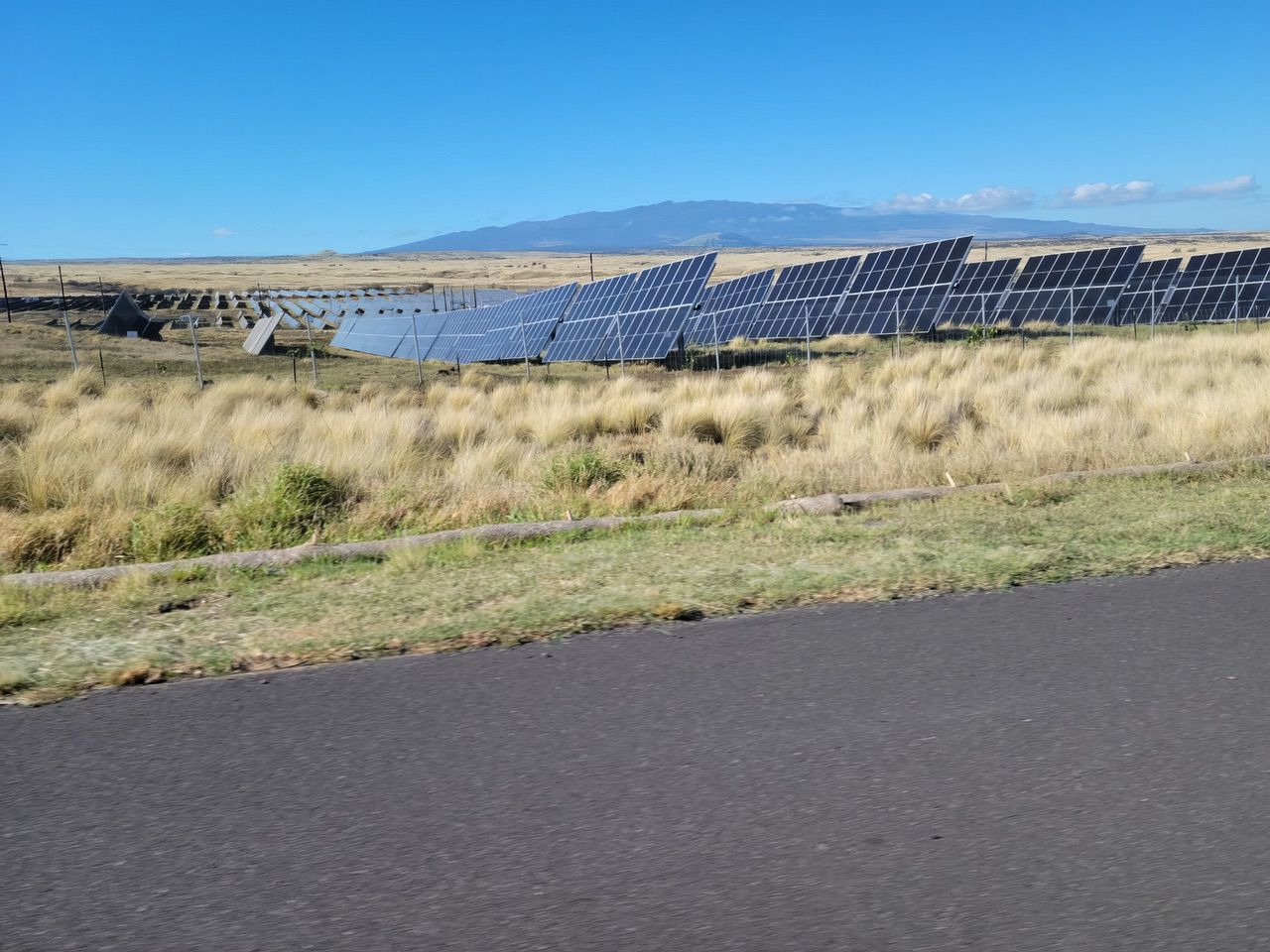
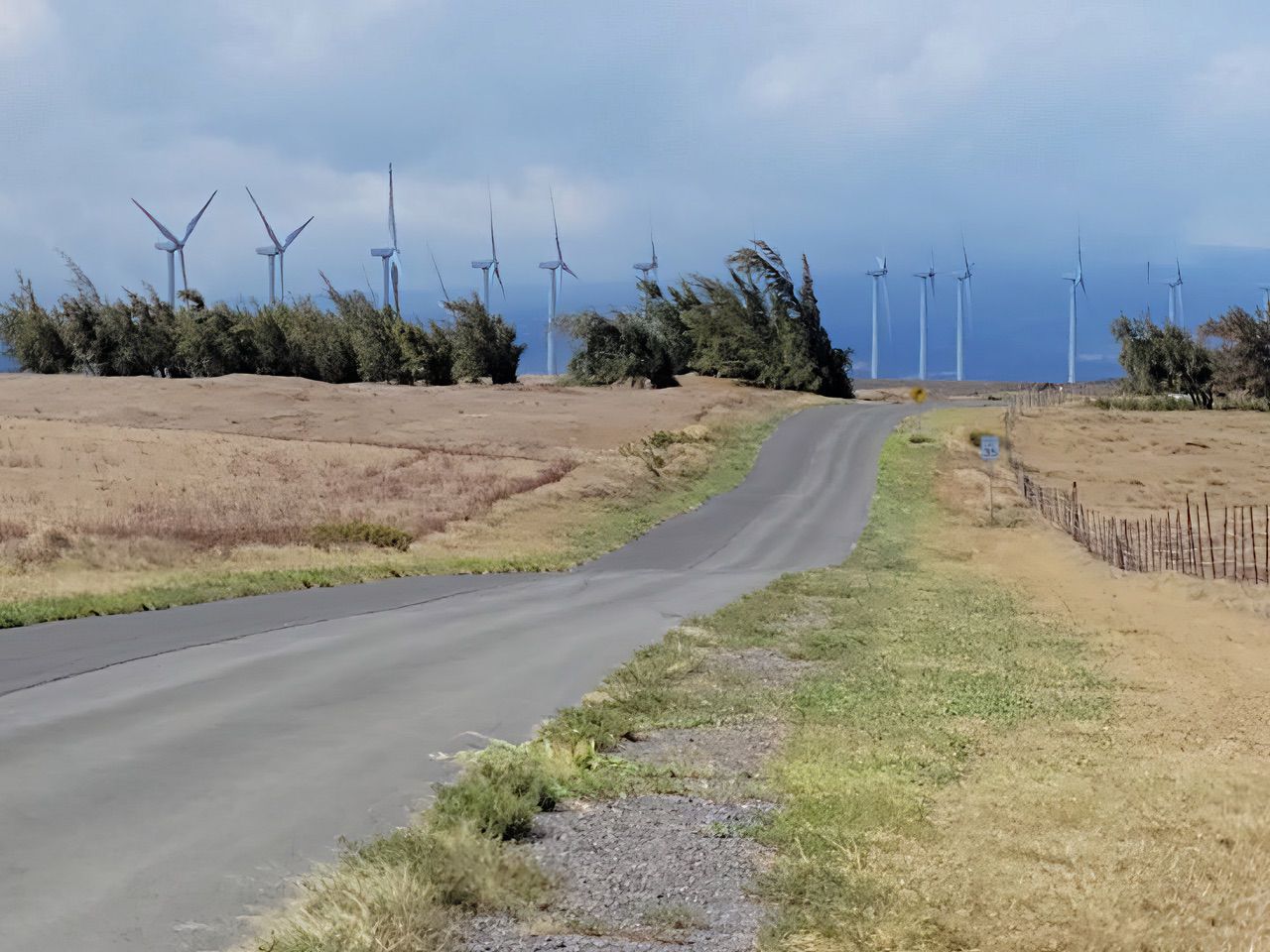
When you are studying geo locations for wind energy and you see trees growing sideways in the same direction, it's not just leaning in the wind. Rather, it's so windy the trees do not grow tall but lay low. That's carpeting–a dead giveaway. Usually, that also means it's not a place you'd like to live.
Stop Making Sense-Making!
by Gil Friend and Ken Homer
Dear fellow Earthling,
Here’s the video of our September 20th session of Living Between Worlds, with Grace, Dignity, and Power.
The current popularity of “sense-making” puzzles and amuses us. It seems an impulse toward something clear and settled…something that may not be available to us in these times.
In this month’s conversation, we explored the challenge and opportunity of what Aviva Zornberg calls “spiritual vertigo.” What Simone Biles calls “the twisties”—“when your brain and body disconnect,” when you’re spinning in mid-air, not sure how, or if, you’ll be able to land. What Bayo Akomolafe calls being “generously lost.”
That’s where we started. Watch or listen to the recording to find out (or review) where we went. (And please: “like!” and “subscribe!”—it trains the YouTube algorithms to treat us more kindly.)
And we hope you’ll join us for our next session Wednesday October 18th, and on the third Wednesday of the month in the months to come.
The next “Living Between Worlds” webinar:
12-1:30p PT, October 18th (and every third Wednesday)
You must pre-register to attend.
Where do I belong?
by Todd Hoskins
Do I belong with the international community? The denizens who take a lot of weekend excursions, and pride themselves in their openness, curiosity, and number of languages spoken?
Do I belong to the North American community? The mostly white, expat assemblage of surfers, former surfers, wannabe surfers, adventurers, and retirees?
Do I belong to the Tico community? The Costa Ricans who gather on porches, beaches, sidewalks, sodas, and sometimes at the village plaza?
Six weeks from now, we will have reached the milestone of living in Costa Rica for a full year. I don’t feel fully at home with any of these groups because we’re not financially wealthy, not retired, don’t ride the waves (ocean waves at least), or fluently speak Spanish.
This is my last Plex entry on being a respectful digital nomad, reflecting on life in Costa Rica and how I want to live in a place where I’m an outsider–an outsider with a heritage of colonization which makes me, in some sense, the furthest thing from an outsider. I’ve written on language, food, and cultural differences. It’s fitting to close this series by exploring belonging.
Rather than “where do I belong?” or “when do I belong?” john a. powell asks the question differently, “To whom do you belong?” Rather than a place, family, or tribe, belonging can be understood as an interconnected ancestry of love. Who has helped me get here? He knows that when we ask that question, we expand our circles of belonging to include great, great grandparents, writers, teachers, colleagues, social workers, uncles, aunts, dogs, trees, rivers, children, rabbis, priests, and fields of wildflowers..
I spent seven hours today on phone and video calls, speaking English, listening to others speak English. At the end of a long day, I notice that I crave comfort. Comfort often means familiarity. For me, there is no better comfort and familiarity after a long day than a hoppy beer on the porch with my beloved and dog by my side.
We tend to rest in sameness. I spend less time with people who are different than me when I’m worn out. This feels like it’s happening across North American cultures. We’re stressed, so we go back to what we know. I don’t want to live that way.
I believe we can create welcoming spaces. We can be inclusive and compassionate. But we can’t make people feel like they belong.
For me, I don’t experience belonging because of where I am, or who I am with. I belong when I re-member that I’m a part of life, when I’m in the pulse of Life. So if someone were to ask, “To whom do you belong?” Life would be my answer. Nature.
Living here has reinforced that if I want to have the energy to create spaces where belonging is more possible, then I need to spend more time in Nature. If I want to speak the language and enjoy the diversity of people here, I need more jungle and less computer.
Review: The Salt of the Earth
by Ken Homer
Review: The Salt of the Earth, a film by Wim Wenders
This movie left my wife and I in a state of awe. That said, it is a difficult movie to watch as it contains graphic images of famine and genocide. In The Salt of the Earth, director Wim Wenders explores the life and work of Sebastião Salgado, one of the world’s great photographers. Originally from Brazil, Salgado obtained a BA and a master’s degree in economics at the University of Sao Paulo before obtaining his Ph.D. from the University of Paris. That education gave him a deep understanding of how certain things work in the world. While studying in Paris, he discovered a love of photography that took him to over 120 countries in his career.
The film opens with a series of incredible black and white photographs of Brazil’s open pit gold mine in Serra Pelada, with thousands of men climbing up and down handmade wooden ladders. Salgado comments that it looks as if the whole population of miners were slaves but, as he explains they are all volunteers, and are slaves only in the sense of men who get exposed to gold cannot leave it and so become slaves to the precious metal itself. Check this link for some of the images he shot while there.
As the film unfolds you learn just what an astonishing human being Salgado is. Wenders comments on a particularly striking photograph of a blind woman, saying that it brings tears to his eyes whenever he sees it and that it reveals a man who has something bordering on reverence for his subjects. Salgado’s face is often on screen shot against a black background. At 79 his visage belies a world weariness while disclosing a spirt that is unbowed despite what he has seen and documented with his camera. And as you watch you too will witness the horrors and atrocities that he documents with an almost superhuman humanity and compassion. And it is that humanity that makes this movie so viewable and so moving.
Virtually all the images presented were shot in black and white. As an amateur photographer myself, I was stunned at how Salgado was able to frame his shots. He comments on the magic that comes when the camera captures that singular moment when someone looks into it and reveals the essence of who they are. His shots of the men who put out the burning oil wells in Kuwait convey more than words can describe.
It was after visiting Rwanda and shooting images of the aftermath of the genocide that Salgado decided that he’d had enough, seen enough, too much really, of what is so often called man’s inhumanity to man, and he returns to his grandfather’s ranch in Brazil. But here too, human activity has devastated the land. No longer is there a rainforest, the cattle have vanished, and the landscape seems as bleak as his inner state of being.
Yet somehow, he and his wife mange over the next couple of decades, to restore the land and, in the process, their souls. By the end of the film, I felt I had witnessed a miracle.
Click here for a sampling of Salgado’s work.
San Rafael Street Painting Festival
by Ken Homer
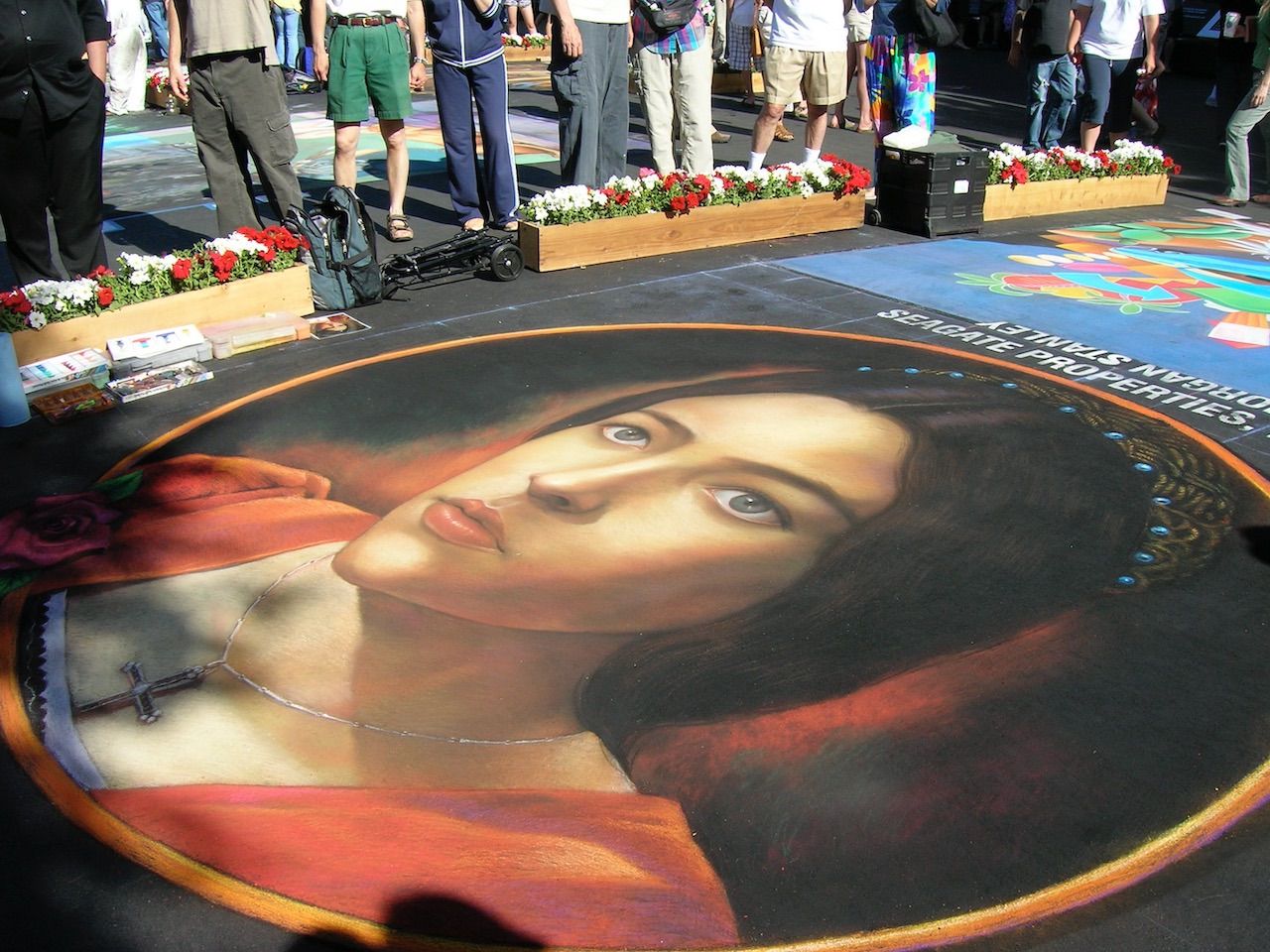
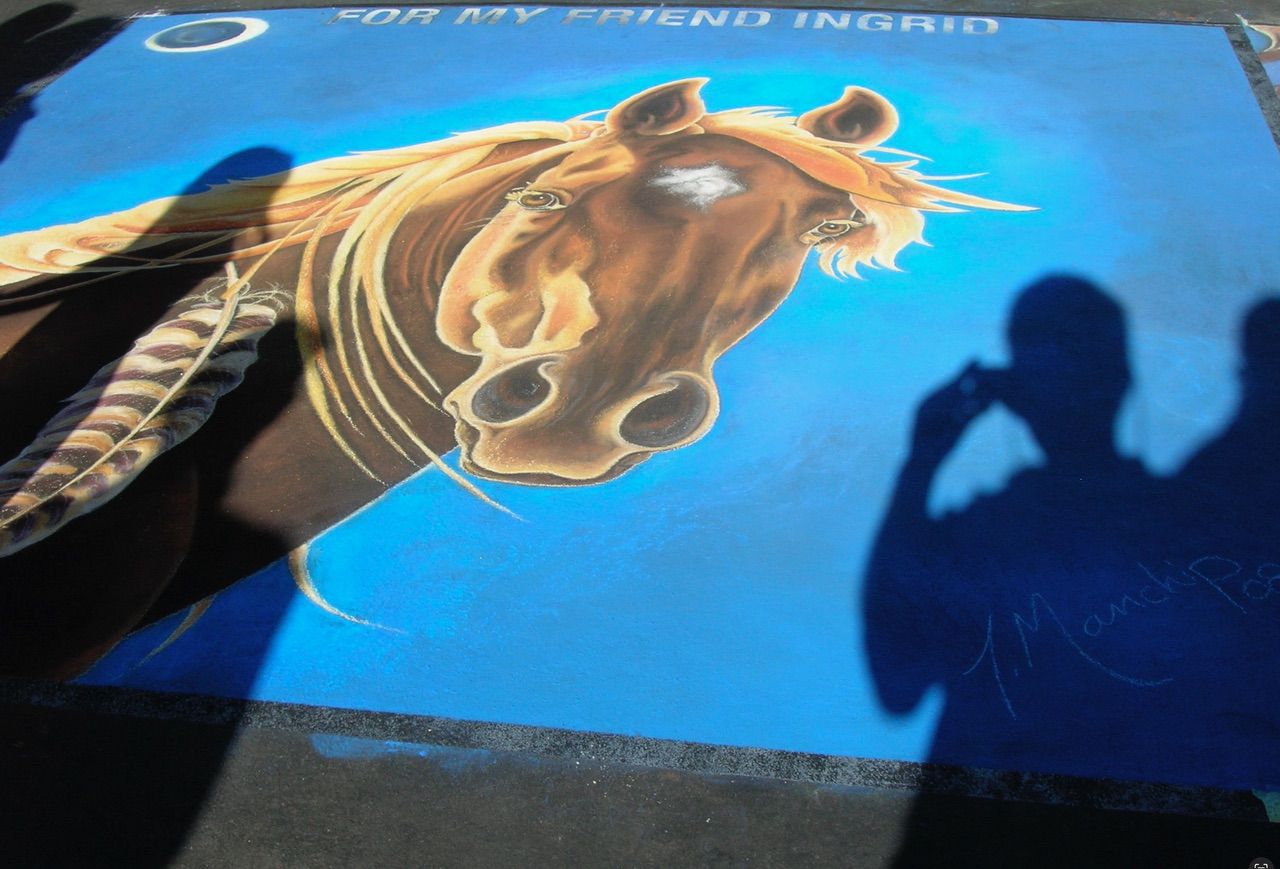
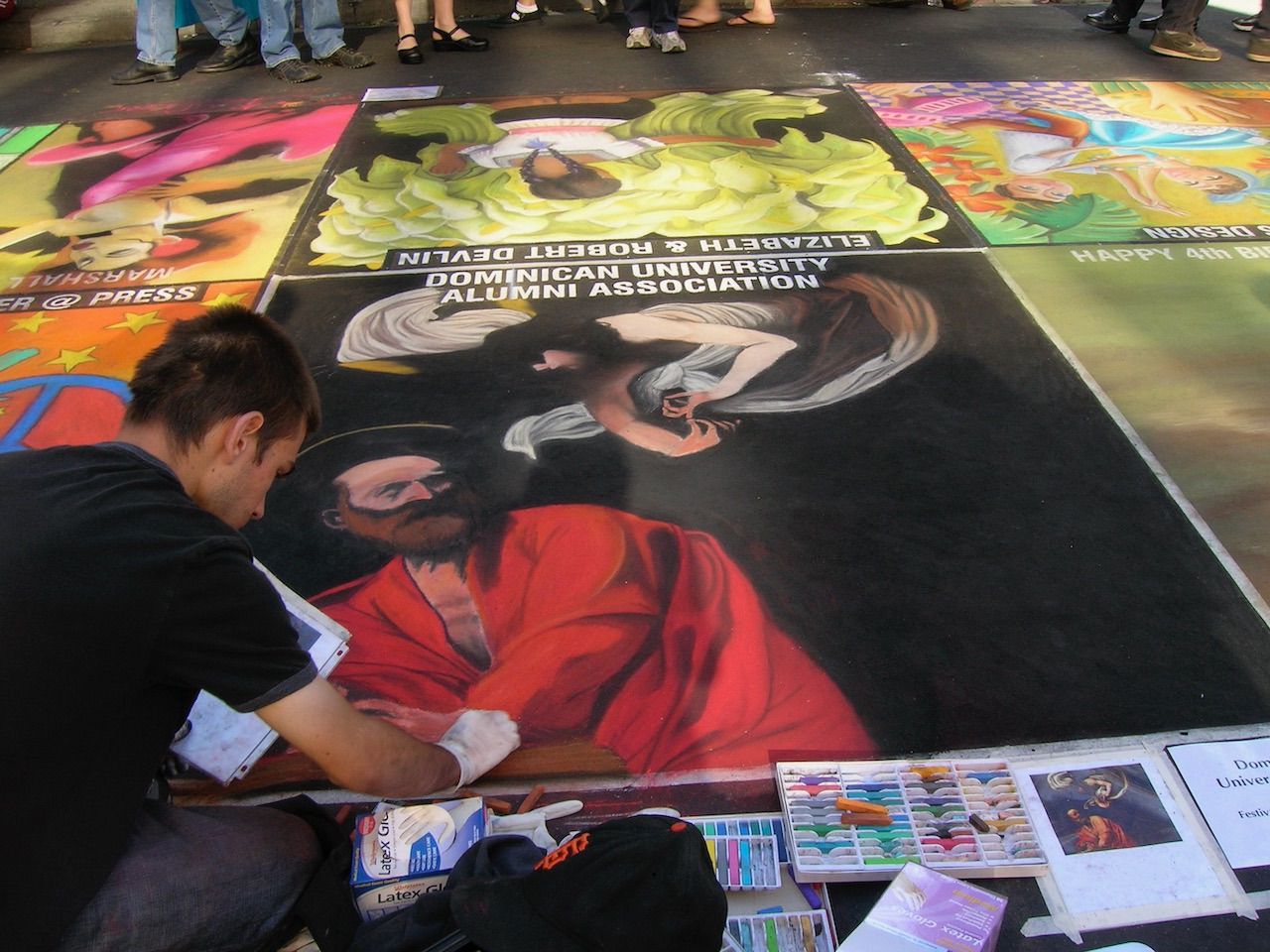
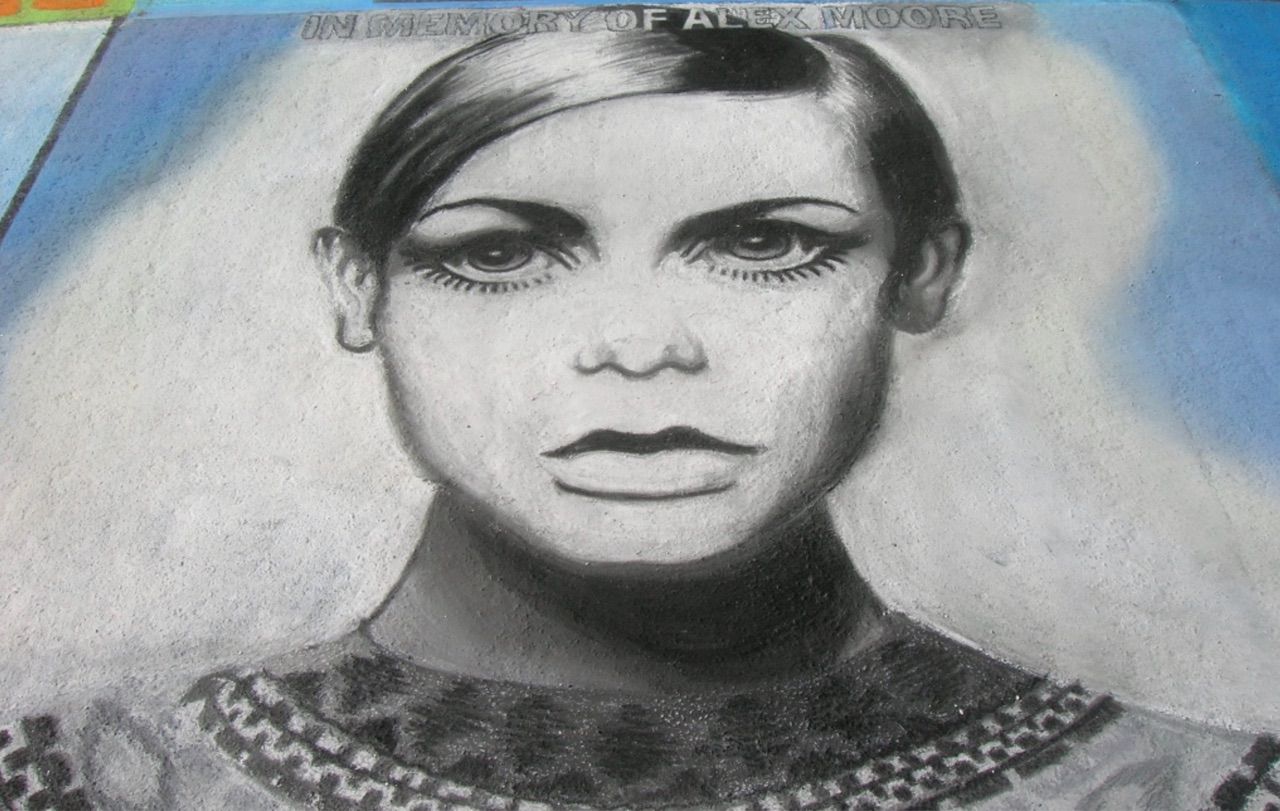
What Color Is the Soul of Your Superorganism?
Notes for a Metamodern Sociology of AI
by George Pór
No wonder I’ve never finished any of the books I started writing. By the time I completed the book outline and the first couple of chapters, the focus of my conversation with the field kept advancing, and so did my attention zooming in on it. Since I got my first computer (an Apple II with a 300-baud modem) in 1982, the “field” has always been the social-technical phenomena that I perceived as floating to the top of evolutionary developments.
While I kept climbing to a higher vantage point to look at the field, both the seen and the seer transfigured. From time to time, an intense sense of FOMO (fear of missing out on something) kicked in, tempered only by my talent in knowledge networking and keeping company with people and groups in the know of the field.
Those groups were not only observers but frequently also active shapers of the field. I started pondering, when did all this begin? Humans and tech have been living in a state of symbiosis since the Stone Age, when we began shaping our tools, and the tools started shaping us. Of course, symbiosis is not a human invention. For example, I enjoy watching the Turkeytail mushroom feeding on the dead log we use to mark the edge of the gravel path in our garden.

What happens between our social and technological systems seems more than symbiosis. Together, we are creating something new. Donna Haraway, a prominent scholar of cyborg (and a socialist ecofeminist), introduced the Greek word sympoiesis, which means making-with.
Sympoiesis would be the proper term for co-creating the entity emerging from the hybrid intelligence of networked human and AI agents. But the sympoiesis of human and tech systems began way before the current revolution of generative AI. While the beginning of emergence in natural systems is hardly perceptible, the tech-human sympoiesis can be linked to a specific date, 1-Jan-1983.
On that day, the TCP/IP protocol was switched on to allow different kinds of computers on various networks to communicate with each other. On that day, the Internet was born, and with it, the network of global conversations, free from time and space constraints.
Fast forward two decades. For the AI-enabled new entity growing from the cross-pollination of human and artificial intelligence, different people use different names: symbiont, metabeing, superintelligence, post-human, holobiont, superorganism, and many others.
They don’t all refer to the same; their connotations are linked with the perspectives from which people who coined them are looking at the world. The name will only find and stick with this baby when it learns to speak for itself.
For now, I’m talking about that newborn as a special kind of “superorganism” resulting from the AI-enabled blending of the social and technical. Its possible developmental paths are foreshadowed in the different dreams of techno-utopians, nightmares of techno-doomsters, and the sincere-ironically smiling protopian future of metamodernists.
Can there be a totalizing, all-encompassing planetary superorganism? Yes, if we apply the term only to its underlying technology stack, separated from its value-laden social component. Otherwise, there will be not one superorganism but different ones corresponding to humanity’s developmental stages.
When some developmental psychologists ran a sentence completion test through ChatGPT, it turned out that the Large Language Model (LLM) on which it was trained sits in the Orange value system in Spiral Dynamics parlance.
Orange is characterized by materialistic, result-driven core values and worldview, in which the world is full of chances and opportunities and can be fully understood using rational thinking. Its unhealthy manifestations include exploitation of the living environment, being too functional, and losing sight of the human aspect.
We can see some backlash against the Orange AI in the language, if not in the substance, of various academic and other initiatives for a “human-centric AI.” That moniker means, most of the time, simply increasing the algorithm's effectiveness and efficiency thanks to human feedback.
On the far horizon, some experiments represent a Green AI alternative to the presently dominant Orange AI. The central themes of Spiral Dynamics’ Green are welfare, love, finding meaning in life, personal growth, and living in harmony with others and the Earth.
There are not yet Yellow, Turquoise, or Metamodern AI projects, but technically, it wouldn’t be challenging to train LLMs on the significant volume of Integral and Metamodern literature, videos, and podcasts.
The next installment of this series will explore the colors of the Superorganism’s soul in more depth.
Thank you for reading! The next edition will be published on 18 October 2023. Email Pete with suggested submissions.
Grateful appreciation and many thanks to Charles Blass, Julian Gómez, Ken Homer, Todd Hoskins, Jack Park, George Pór, and David Witzel for their kind contributions to this issue.